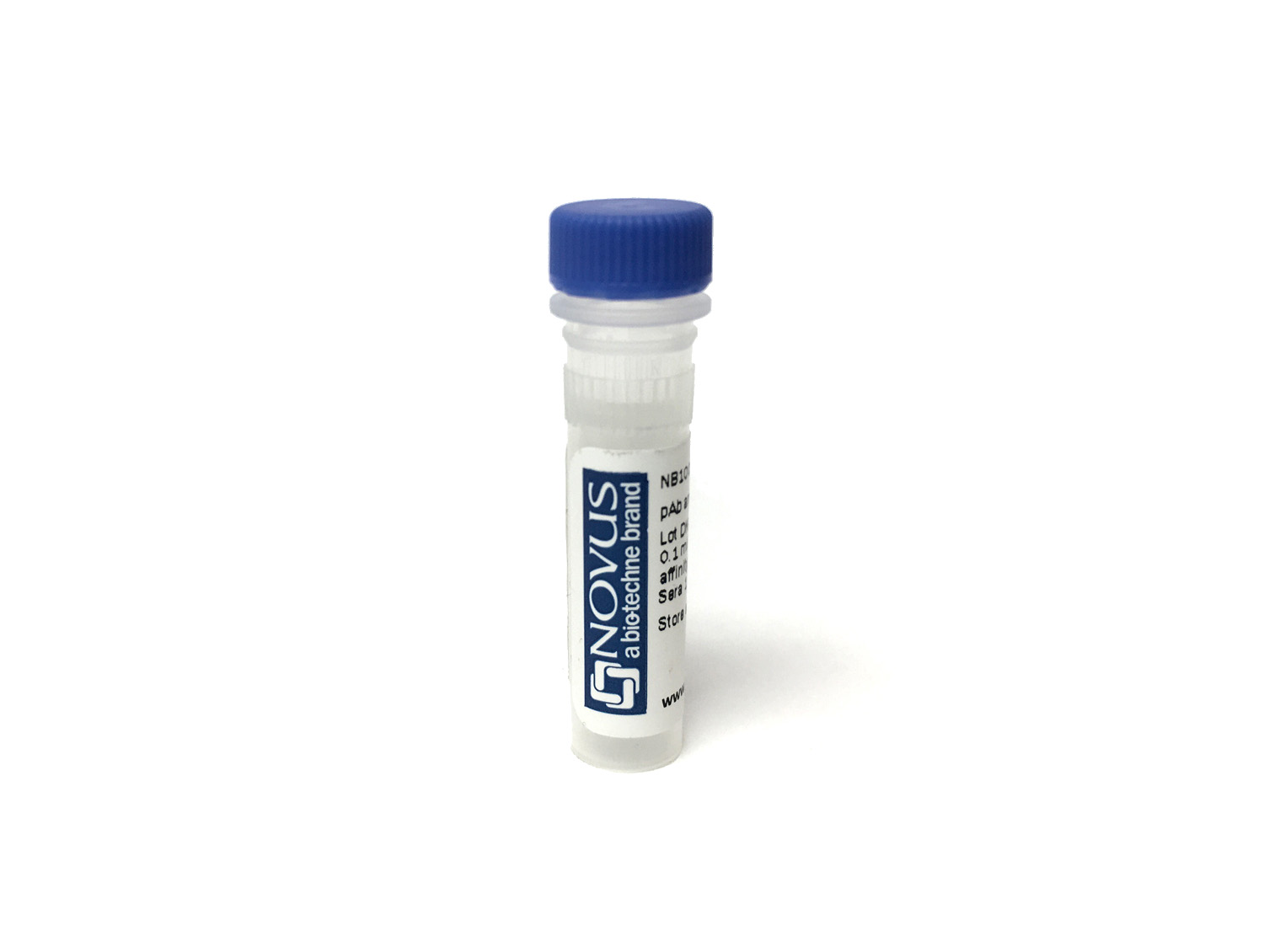NCAM-1/CD56 Antibody (ERIC-1) - BSA Free
Novus Biologicals, part of Bio-Techne | Catalog # NB100-2718


Conjugate
Catalog #
Key Product Details
Species Reactivity
Human
Applications
CyTOF-ready, ELISA, Flow Cytometry, Immunocytochemistry/ Immunofluorescence, Immunohistochemistry, Immunoprecipitation, Radioimmunoassay, Western Blot
Label
Unconjugated
Antibody Source
Monoclonal Mouse IgG1 Clone # ERIC-1
Format
BSA Free
Concentration
1 mg/ml
Product Specifications
Immunogen
Retinoblastoma tissue membrane fraction
Localization
Type I membrane protein
Clonality
Monoclonal
Host
Mouse
Isotype
IgG1
Applications for NCAM-1/CD56 Antibody (ERIC-1) - BSA Free
Application
Recommended Usage
ELISA
1:100 - 1:2000
Flow Cytometry
1:10 - 1:1000
Immunocytochemistry/ Immunofluorescence
1:10 - 1:500
Immunohistochemistry
1:10 - 1:500
Immunoprecipitation
1:10 - 1:500
Radioimmunoassay
1:100 - 1:2000
Western Blot
1:100 - 1:2000
Application Notes
In the mouse brain, 3 main isoforms have been described of 180,140 and 120 kDa MW. A Western blot of 2 year old pediatric brain revealed bands of 180,140 and 120 kDa (weakly) with ERIC-1. This antibody is CyTOF ready. Positive control(s): Neuroblastome.
Formulation, Preparation, and Storage
Purification
Protein A purified
Formulation
PBS
Format
BSA Free
Preservative
0.02% Sodium Azide
Concentration
1 mg/ml
Shipping
The product is shipped with polar packs. Upon receipt, store it immediately at the temperature recommended below.
Stability & Storage
Store at -20C. Avoid freeze-thaw cycles.
Background: NCAM-1/CD56
Long Name
Neural Cell Adhesion Molecule
Alternate Names
CD56, NCAM1
Entrez Gene IDs
4684 (Human)
Gene Symbol
NCAM1
Additional NCAM-1/CD56 Products
Product Documents for NCAM-1/CD56 Antibody (ERIC-1) - BSA Free
Product Specific Notices for NCAM-1/CD56 Antibody (ERIC-1) - BSA Free
This product is for research use only and is not approved for use in humans or in clinical diagnosis. Primary Antibodies are guaranteed for 1 year from date of receipt.
